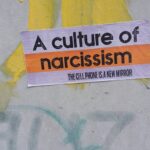ESCAPING THE NARCISSIST
Are you trapped in a toxic relationship? It's time to reclaim your life and find healing. ESCAPING THE NARCISSIST: HOW TO HEAL AND RECOVER FROM NARCISSISTIC ABUSE IN RELATIONSHIPS is your guide to breaking free and starting your journey towards recovery.
Don't let the pain control you any longer. Take the first step today and discover the strategies to overcome emotional abuse and rebuild your life. You deserve happiness and peace.
Start Your Healing Journey TodayThe initial discard by a narcissist can be a devastating experience, leaving the victim feeling confused, hurt, and emotionally drained. It is common for the victim to question what they did wrong and why the narcissist suddenly turned cold and indifferent. The pain of being discarded by someone they once trusted and loved can be overwhelming, leading to feelings of betrayal and abandonment. Coping with the aftermath of the discard requires a great deal of self-compassion and understanding. It is important for the victim to recognize that the discard is not a reflection of their worth or value as a person, but rather a manipulation tactic used by the narcissist to maintain control and power in the relationship.
During this time, it is crucial for the victim to seek support from friends, family, or a therapist who can provide validation and empathy. It is also important for the victim to practice self-care and engage in activities that bring them joy and comfort. Journaling, meditation, and exercise can be helpful in managing the intense emotions that come with being discarded by a narcissist. It is also important for the victim to set boundaries with the narcissist and limit contact as much as possible to prevent further emotional harm. By taking these steps, the victim can begin to heal from the pain and confusion of the initial discard and move towards a place of emotional stability and empowerment.
The Narcissist’s Return: Understanding the Motivations and Manipulations
After the initial discard, it is not uncommon for a narcissist to attempt to re-enter the victim’s life, often with promises of change and reconciliation. This return can be confusing and emotionally tumultuous for the victim, as they may still have feelings for the narcissist and hope for a positive outcome. However, it is important for the victim to recognize that the narcissist’s return is often motivated by a desire to regain control and manipulate the victim once again. The narcissist may use tactics such as love bombing, gaslighting, and manipulation to lure the victim back into the relationship, only to continue their cycle of abuse and exploitation.
Understanding the motivations and manipulations of the narcissist’s return is crucial for the victim to protect themselves from further harm. It is important for the victim to recognize that the narcissist’s behavior is not genuine or sincere, but rather a calculated attempt to maintain power and control. Setting firm boundaries and limiting contact with the narcissist is essential in preventing further emotional manipulation and abuse. Seeking support from trusted individuals and practicing self-care can also help the victim navigate the complexities of the narcissist’s return and move towards a place of emotional healing and empowerment.
Navigating the Emotional Rollercoaster: Recognizing the Cycle of Idealization and Devaluation
One of the most challenging aspects of being in a relationship with a narcissist is navigating the emotional rollercoaster of idealization and devaluation. The narcissist often employs tactics such as love bombing and flattery during the idealization phase to gain the victim’s trust and admiration. However, this phase is often short-lived, as the narcissist will eventually transition into the devaluation phase, where they will criticize, belittle, and devalue the victim to maintain control and power in the relationship.
Recognizing this cycle of idealization and devaluation is crucial for the victim to understand that the narcissist’s behavior is not a reflection of their worth or value as a person. It is important for the victim to recognize that the narcissist’s actions are driven by their own insecurities and need for validation, rather than any fault of the victim. By understanding this cycle, the victim can begin to break free from the emotional manipulation and abuse of the narcissist and move towards a place of emotional healing and empowerment.
Setting Boundaries: Protecting Yourself from Future Hurt
One of the most important steps in protecting oneself from future hurt in a relationship with a narcissist is setting firm boundaries. The narcissist often lacks empathy and respect for others’ boundaries, leading to emotional manipulation and exploitation. It is crucial for the victim to establish clear boundaries with the narcissist and enforce consequences if those boundaries are violated. This may include limiting contact with the narcissist, seeking legal protection if necessary, or ending the relationship altogether.
Setting boundaries also involves recognizing one’s own needs and prioritizing self-care. It is important for the victim to engage in activities that bring them joy and comfort, seek support from trusted individuals, and practice self-compassion. By setting boundaries and prioritizing self-care, the victim can protect themselves from future hurt and move towards a place of emotional healing and empowerment.
Seeking Support: Building a Strong Support System for Emotional Healing
Seeking support from friends, family, or a therapist is crucial for emotional healing after being in a relationship with a narcissist. The emotional manipulation and abuse of a narcissist can leave lasting scars on the victim, making it essential to seek validation, empathy, and understanding from trusted individuals. A therapist can provide guidance and support in navigating the complexities of healing from a relationship with a narcissist, while friends and family can offer love and encouragement during this challenging time.
Building a strong support system also involves connecting with others who have experienced similar situations. Support groups or online forums can provide a sense of community and understanding for victims of narcissistic abuse. By seeking support from trusted individuals and connecting with others who have shared similar experiences, the victim can begin to heal from the emotional trauma of being in a relationship with a narcissist.
Moving Forward: Embracing Self-Care and Personal Growth
Moving forward after being in a relationship with a narcissist involves embracing self-care and personal growth. It is important for the victim to prioritize their own needs and engage in activities that bring them joy and comfort. This may include practicing mindfulness, journaling, engaging in creative pursuits, or participating in physical exercise. By prioritizing self-care, the victim can begin to heal from the emotional trauma of being in a relationship with a narcissist and move towards a place of emotional stability and empowerment.
Personal growth also involves reflecting on one’s experiences in the relationship with a narcissist and learning from them. It is important for the victim to recognize their own strengths and resilience in overcoming the emotional manipulation and abuse of the narcissist. By embracing self-care and personal growth, the victim can begin to rebuild their sense of self-worth and move towards a brighter future free from emotional manipulation and abuse.
Breaking the Cycle: Recognizing the Signs and Red Flags for Future Relationships
Breaking free from the cycle of emotional manipulation and abuse by a narcissist involves recognizing the signs and red flags for future relationships. It is important for the victim to be mindful of their own needs and boundaries when entering into new relationships, as well as being aware of potential warning signs of narcissistic behavior in others. This may include being cautious of individuals who exhibit excessive flattery or charm, lack empathy or respect for boundaries, or display manipulative behavior.
Recognizing these signs and red flags is crucial for protecting oneself from future hurt in relationships. It is important for the victim to trust their instincts and prioritize their own well-being when entering into new relationships. Seeking support from trusted individuals or a therapist can also provide guidance in navigating new relationships after experiencing emotional manipulation and abuse by a narcissist. By recognizing the signs and red flags for future relationships, the victim can break free from the cycle of emotional manipulation and abuse by a narcissist and move towards healthy, fulfilling connections with others.


